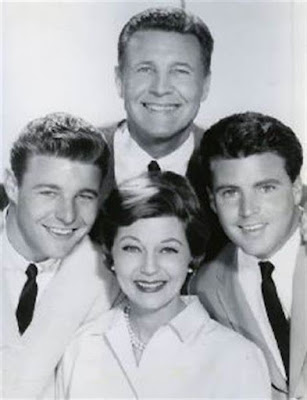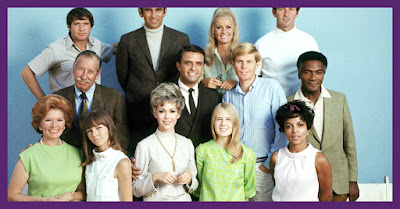My journey arrives at last to Saturday nights in 1973, and the unveiling of perhaps the decade’s most celebrated prime time schedule. When crotchety old geezers like me reflect on how television was so much better back in my day, it’s the CBS lineup from this season that will always figure prominently in those recollections.
How we got from this era of television to where we’re at now, with people dancing and singing about their diseases in commercials, I’ll never know. But that’s why so many of us prefer looking back to a time when television brought us together.
Saturday, 1973
CBS
All in the Family
M*A*S*H
The Mary Tyler Moore Show
The Bob Newhart Show
The Carol Burnett Show
As you might expect, this powerhouse lineup dominated in the Nielsen ratings, and in the pre-VCR days likely kept many folks home on Saturday nights. Sure you could go out to a movie or a concert, or you could change into comfort clothes, order a pizza, and settle in for hours of entertainment from five now-classic shows. I know which choice sounds more enticing to me.
All in the Family was the year’s top-rated series, as it was last year and the year before, and as it would remain for another two seasons. M*A*S*H finished the season at #4, followed by Mary at #9, Bob at #12, and Carol Burnett at #27.
Surprisingly, given how many people fondly remember CBS as the place to be on every Saturday night in the 1970s, this was the only year that this lineup remained intact. The network would repeatedly try to introduce a new series amidst established hits, but that strategy did not boost interest in shows like Doc and Paul Sand in Friends & Lovers.
What could the other networks possibly do to steal a few viewers away from these iconic shows? Let’s find out.
NBC
Emergency!
NBC Saturday Night Movie
In its second season Emergency! pulled in enough viewers to stay on the schedule, and would remain the network’s best counter-programming option on Saturday nights through the end of the decade.
ABC
The Partridge Family
ABC Suspense Movie
Griff
Ratings had already started to fall for The Partridge Family, and the move to Saturday night in its fourth and final season would seal its fate. The addition of Ricky Segall only made viewers change channels faster before he could start singing.
Instead of standard movie-of-the-week fare, ABC tried a new concept with a focus on thrillers and horror stories. Two of the offerings this season are still fondly remembered by classic TV fans, and were popular enough to earn DVD releases decades after being first broadcast.
Satan’s School for Girls was an Aaron Spelling-Leonard Goldberg production, starring two actresses who would work together later in the decade on Spelling/Goldberg’s Charlie’s Angels – Kate Jackson and Cheryl Ladd. After a young woman dies in mysterious circumstances, her sister suspects a connection with the private school she attended, and enrolls to get some answers.
It’s never that scary but it’s fun, and I confess I fell for its one character twist the first time I watched it.
The Girl Most Likely To… was co-written by Joan Rivers, and starred Stockard Channing as a plain college girl who is repeatedly ridiculed by her fellow students.
Fleeing from one especially embarrassing experience, she gets in a car accident, undergoes extensive plastic surgery, and when the bandages come off she is suddenly beautiful. How does she celebrate her good fortune? By plotting murderous revenge against everyone who humiliated her.
It didn’t do much for her career at the time but Channing is wonderful here, and Ed Asner plays the police detective who wants to arrest her, while also admiring her spunk. Definitely worth a look on YouTube if you’ve never seen it.
As for Griff, it was a standard 1970s detective show starring Lorne Greene as a former cop turned private eye. Now, me, I’d rather watch a ‘70s detective show than anything on Netflix, but there was nothing special about this one that made it stand out from a crowded field of similar series.
Ben Murphy costarred as Griff’s partner, and that was probably a bad omen because few actors appeared in more short-lived shows. As for Lorne Greene, after 14 seasons on the Ponderosa he was probably just happy to be off a horse.
Shows Missed:
The Don Knotts Show (1970)
San Francisco International Airport (1970)
Nancy (1970)
The Headmaster (1970)
The Man and the City (1971)
The Chicago Teddy Bears (1971)
Search (1972)
Assignment: Vienna (1972)
The Delphi Bureau (1972)
Jigsaw (1972)
The Little People (1972)
The Sixth Sense (1972)
Tenafly (1973)
Faraday & Company (1973)
Love Story (1973)
Needles & Pins (1973)
Calucci’s Department (1973)







































